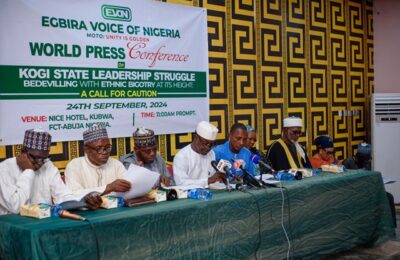Spread the love
Kogi is known as the confluence state as it is the home to where two great rivers meet i.e. River Niger and River Benue. These two rivers feature prominently on Nigeria’s coat of arms. Located in North-Central of Nigeria, Kogi is one of the few states that hold the relics of colonialism.
Kogi is also the home of Lord Fredrick Lugard, Nigeria’s first Governor-General, the location where Rivers Niger and Benue, Nigeria’s most prominent rivers, merge is generally referred to as “the confluence state”. The confluence, which is widely recognised for its tourism potential, is figuratively described by observers as the “heart of Nigeria’’ because of its geographical location in the country. TAYO ADELAJA highlights the different sites located within the state which tourists may find attractive.
Lord Lugard’s Residence
He was Nigeria’s first Governor-General who amalgamated Northern and Southern protectorates in 1914 and the nation, Nigeria, was born.
The historical building is now within the premises of the Nigeria Union of Journalist (NUJ) press centre. From records, one of the quarters of the senior officers located in Lokoja near the banks of River Niger, this is an important centre for slave trade during slavery era in Nigeria. It is also the path through which the European explorers and missionaries in the early 19th century settled in the country.
According to reports, any slave that lays his/her hand on this iron regains their liberty or freedom. It is accommodated on a landed property owned by Holy Trinity Aglican Church, Lokoja. The spot is also purported to be the final resting place of Bishop Ajayi Crowther.
First Primary School In Northern Nigeria
The first primary school in Northern Nigeria was built in 1865 by missionaries under the aegis of Bishop Ajayi Crowther, the first African Anglican Bishop, also credited with the translation of English Bible to Yoruba, as well as the military hospital and the prison.
Holy Trinity School, Lokoja is the first primary school in Northern Nigeria. The pyramidal block of classrooms erected since its inception are still in place. The compound also houses the famed Iron of Liberty which slaves touched to regain their freedom.
The Holy Trinity Primary school to a very large extent pioneered the spread of education in Northern Nigeria. Students came from far and wide to acquire western education in the school.
Confluence Of River Niger And Benue
River Niger remained a marvel to the Europeans until John and Richard Landers passed through the confluence in 1830, completing the journey that Mungo Park had earlier started. Rivers Niger and Benue are the two largest rivers in West Africa, the two rivers meet at Lokoja forming a Y-shaped structure when they drain southwards into the ocean. While River Niger is brownish in colour, River Benue is light green. Fishing which is the major pre-occupation of the people around the rivers can be noticed while there are ferry, boat services plus cruising facilities within view of the confluence.
Confluence Carnival
The confluence carnival started in 2013. The carnival is a yearly event that showcases Kogi’s culture, brightly coloured attires while entertaining tourists and visitors with youth/children fiesta, Local Government Day (21 local governments), food fair, face of carnival and street parade. The carnival is vibrant and attracts visitors from far and wide.
Mount Patti
Mount Patti is 1,349 foot (411 meters) and stand at about 750metres above sea level. It is a mountain that would excite every tourist and visitor. The top of the mountain is home to some organizations like the Nigerian Television Authority (NTA), Lokoja and The Confluence Cable Network (TV and Radio), which have their offices comfortably located atop it. The panoramic view of Lokoja city can best be appreciated when you get to the top of the mountain. It is not just appealing but breathtaking as you can view the confluence point of River Niger and River Benue.
The Inikpi Statue
This statue was commissioned as the greatest reminder of the bravery of Inikpe, the daughter of the first Attah of Igala Kingdom who gave her life for the freedom of her people, the Igalas.
World War Cenotaph, Lokoja
The cenotaph was built in memory of soldiers who lost their lives during the World War II. This is a massive concrete block on top of which is mounted on an old artillery. Beside it are light cannons and machine guns mounted on small pavements and the names of the soldiers who distinguished themselves during the wars were written on tables mounted on the side of the cenotaph.
Osome Falls
The fall is located in Ukpogo. Osome is a stream that winds its way through vast igneous rocks of varying heights and sharply descends into a valley about 50m below the towering rocks, producing thunderous sounds which could be heard about one hundred meters away. Tourists are always excited about the thunderous noise from the stream which they always find fascinating.
European Cemeteries
The biggest European cemetery in Nigeria with remains of European soldiers of the West African Frontier Force (WAFF) in Lokoja until 1926 and those of European missionaries. Some of the tomb stones in the cemeteries dated as far back as 1867. The historical values of the tomb stones show those missionaries that passed on while on missionary in that area.
Late Atta of Ebira’s
Palace The palace was built in 1927, the palace was constructed with the combination of ancient and modern architecture. It is a potential tourist destination as the sprawling red-brick palace of the Ohinoyi of Ebiraland.
If concerted efforts are genuinely made to develop the dormant tourism industry of Kogi State, the state may soon have increased internally generated revenue, growth in GDP as well as becoming Mecca for tourists.
Credits: Tayo Adelaja | Leadership
Spread the love





